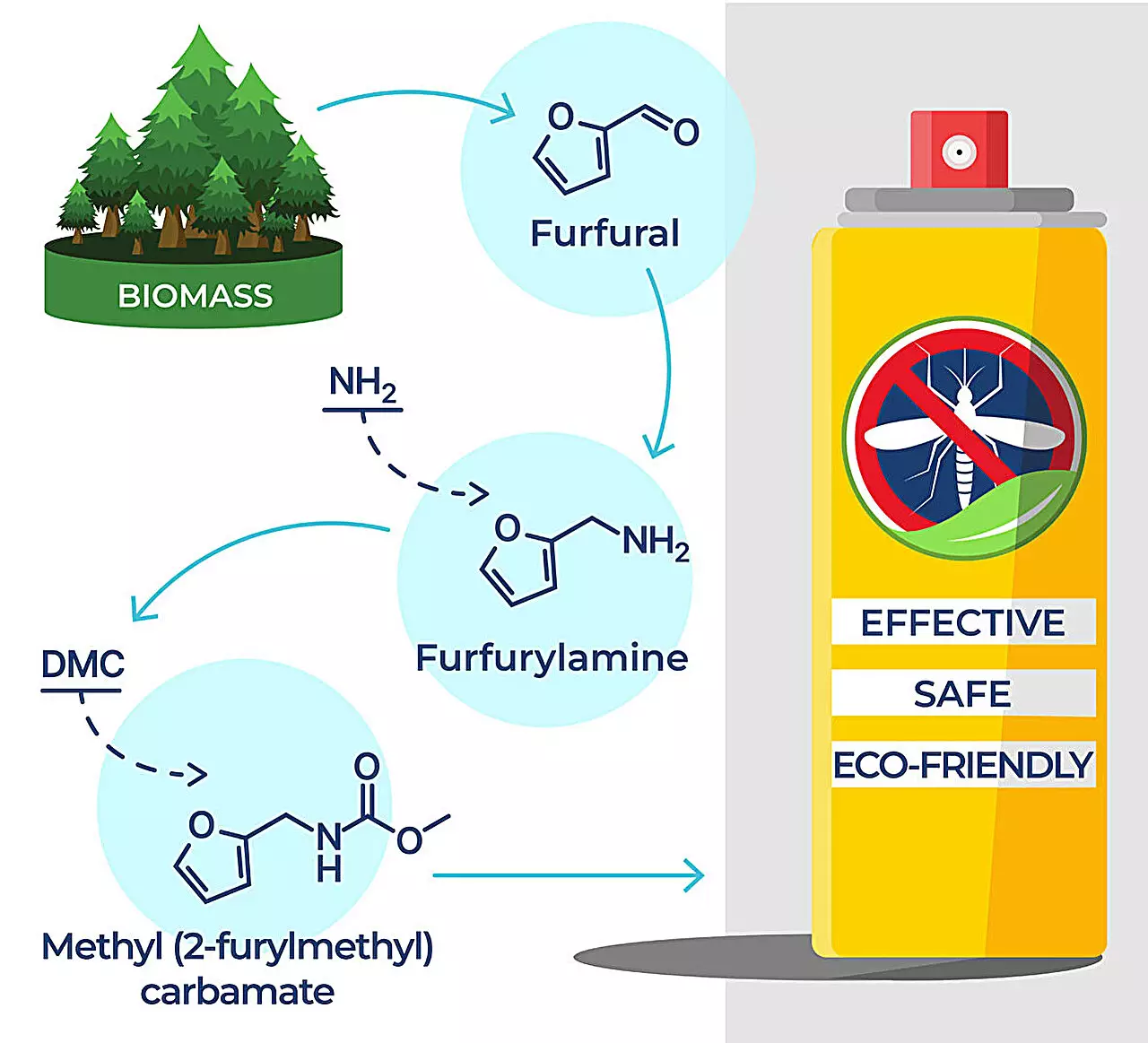The growing global population, projected to reach 8.2 billion by 2024, poses significant challenges in agricultural production and food security. Traditionally, insecticides have played a pivotal role in protecting crops from pests; however, their widespread use has led to detrimental effects on non-target species and the environment at large. As the agriculture sector grapples with these environmental concerns, innovative solutions have become paramount. A visionary research team at the University of Delaware, spearheaded by Professors Dion Vlachos and Michael Crossley, has made significant strides in developing insecticidal ingredients derived from sustainable biomass materials, thereby paving the way for more ecologically friendly pest management strategies.
Conventional pesticides, while effective at combating pests, introduce a host of complications, including adverse effects on beneficial insects such as bees and harmful ramifications on water sources and ecosystems. What is desperately needed is a solution that effectively tackles agricultural pests while minimizing environmental impact. The UD team’s novel approach centers on creating target-specific insecticidal compounds that leverage biomass waste—namely wood pulp, straw, and corncobs—as the primary raw materials. This shift not only directly addresses the ecological concerns associated with traditional pesticides but also aligns with sustainable practices that advocate for the circular economy.
Biomass has emerged as a valuable and renewable resource, especially the lignocellulosic remnants from industries such as pulp and paper. The UD researchers explored this potential by utilizing two key building blocks: vanillin and furfural. Vanillin, typically associated with flavoring but also derived from plant lignin, and furfural, obtained from sugar molecules in biomass, formed the basis of the new insecticidal compounds. The transformative process involved intricately modifying these molecules to enhance their efficacy against pests while reducing harmful environmental impacts.
The research team collaborated with entomologist Michael Crossley to evaluate the efficacy of their novel compounds. The tests were conducted on the lesser mealworm beetle, revealing that the newly synthesized insecticides demonstrated mortality rates comparable to leading conventional products. However, the focus was not solely on effectiveness; researchers were acutely aware of the necessity to protect non-target species. As Crossley pointed out, further studies are essential to understanding the potential risks to beneficial insects, ensuring a balanced approach to pest control.
One of the striking advantages of the UD-developed insecticides lies in their cost-effectiveness. The technoeconomic analysis indicated that the compounds derived from furfural were significantly cheaper—two to four times less expensive—than traditional pest control substances. With nearly 991 million tons of dry lignocellulosic biomass available annually in the United States, the scalability of this method presents a promising alternative to petroleum-based products that dominate the market today. Moreover, the reduction of toxic reagents in the production process not only enhances sustainability but also makes the entire manufacturing cycle safer for workers and ecosystems.
Interestingly, the research uncovered an unexpected benefit of the new compounds regarding their safety for aquatic life. The chemistry of the UD-developed insecticides favors aquatic habitats, allowing for easier removal from edible produce. This means that consumers can wash these safer insecticides off fruits and vegetables, thus reducing pesticide residues in their diet and subsequently minimizing the risk posed to fish and other aquatic organisms.
The innovative research conducted at the University of Delaware stands at the forefront of a pivotal shift towards sustainable agricultural practices. By transforming waste into valuable insecticidal agents and prioritizing ecologically friendly formulations, Vlachos and Crossley’s team has opened new avenues for efficient pest management that safeguards not only crops but also the environment. As consumer awareness and demand for green products grow, the implications of this research could reshape the landscape of agriculture, ensuring food security while fostering environmental health—a delicate yet necessary balance in our rapidly changing world.


Leave a Reply